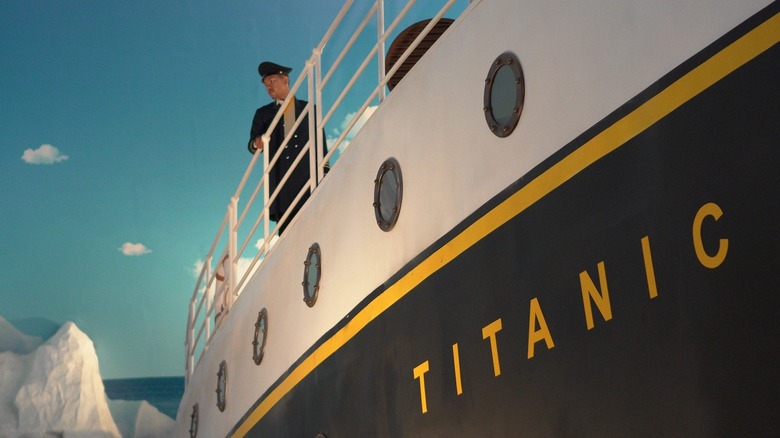The Eerie Connection To The Titan Submersible's Name
Over the past week, the world has been following the story of the Titan submersible, a small commercial vehicle owned by nautical company OceanGate that left on Sunday to visit the wreckage of the RMS Titanic. A short way into the voyage, contact with the Titan was suddenly lost as it approached the remains of the infamous ship, prompting a swift investigation and rescue effort. After scattered debris was uncovered near the Titanic's confirmed resting place, it was determined that the vessel was destroyed in a "catastrophic implosion," with the crew aboard presumed deceased.
In the wake of this incident, a fresh wave of attention has been cast upon the sinking of the Titanic and the events leading up to it. One subject of this increased attention is a book that was published in 1898 titled "Futility," which details the collapse of a ship titled the "Titan" 14 years before the real-life Titanic disaster. Given the shared name between this fictional boat, the sunken Titanic, and now the destroyed Titan submersible, some have begun to wonder if the story of "Futility" has proven to be inadvertently prophetic.
The story of Futility
"Futility" was penned by writer Morgan Robertson in 1898, a little over a decade before construction began on the RMS Titanic in 1909 and about 14 years before its infamous collision with a massive iceberg. In this novel, Robertson tells the story of a massive passenger liner christened the Titan, a vessel that, much like the Titanic, was deemed "unsinkable." The fictional ship had a remarkably similar construction to the Titanic, measuring in at 880 feet versus the Titanic's 800 and featuring a construction heavily reliant on watertight compartments.
In 1898 Morgan Robertson wrote a novella: Futility, about a "practically unsinkable" liner that hit an iceberg on the starboard and sank in the North Atlantic in April. It had too few lifeboats. It was named Titan.
14 years later Titanic sailed.
The submersible is named Titan. pic.twitter.com/n3y9P4iWTp
— Mark by The Sea (@atShoalstone) June 20, 2023
Of course, there are some obvious differences between the story and real life. Setting out from New York with a passenger and crew manifest of around 3,000, the Titan sank completely a mere few minutes after leaving port, with only 13 individuals surviving. The Titanic, meanwhile, was out and about for around three hours before colliding with the iceberg, and only around 1,500 of the 2,208 passengers and crew aboard were killed in the subsequent collapse and sinking.
In spite of the differences, the similarities are incredibly striking. For Robertson to have concocted such an incident over a decade before the Titanic was even conceptualized is obviously unsettling, and the fact that his fictional boat shares its moniker with the lost submersible is all the more so.

